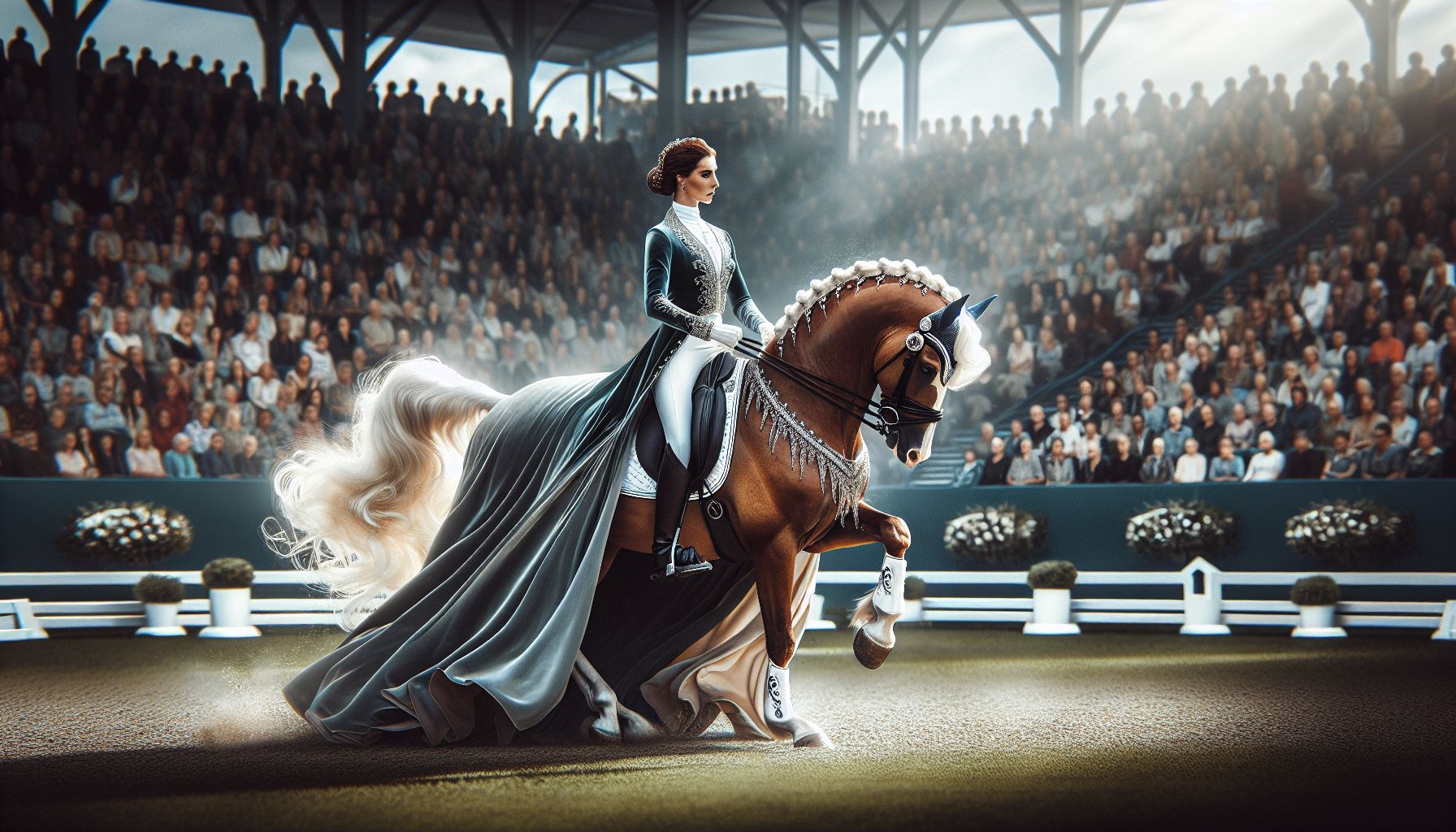“Dressage is the highest expression of horse training. It’s an amazing feeling to ride a horse in complete harmony.” – Charlotte Dujardin
Have you ever watched horses seemingly dance to the rhythm of beautiful classical music, with their riders executing intricate and elegant moves? If you have, then you’ve witnessed the awe-inspiring discipline known as dressage. Often referred to as “horse dancing,” this equestrian sport combines grace, precision, and artistry in a truly captivating display. In this blog post, we’ll dive into the world of dressage, exploring its history, principles, competitive aspects, and the unique bond between horse and rider. So, let’s put on our riding boots and begin our journey into the enchanting world of dressage!
The Origins of Dressage: A Ballet on Horseback
Dressage traces its roots back to the ancient Greeks, who developed a method of training war horses for military purposes. Throughout history, this classical form of horse training evolved into a more refined art, favored by European nobility. Over time, dressage became less associated with warfare and more focused on the beauty and artistry of the horse’s movements.
The Artistry in Motion: Principles of Dressage
At its core, dressage aims to showcase the horse as a willing and responsive partner, capable of executing a series of intricate, predetermined movements with precision and fluidity. The three primary principles underlying dressage are relaxation, suppleness, and connection.
Relaxation
Relaxation is fundamental to the success of dressage. Horses must be calm, mentally and physically, to perform the demanding movements. Riders strive to create an atmosphere of trust and harmony, allowing the horse to remain relaxed and poised throughout the routine.
Suppleness
Suppleness refers to the horse’s agility and flexibility. Through careful training and exercises, dressage riders help their horses achieve suppleness, enabling them to move with effortless grace and precision. The ultimate goal is to create a harmonious partnership, where the horse responds promptly to the rider’s subtle cues.
Connection
Connection represents the invisible bond between horse and rider. It’s a delicate balance of communication, trust, and mutual understanding. The rider guides the horse with nearly imperceptible aids, communicating their intentions, while the horse responds with unwavering trust and obedience. This connection allows the pair to perform synchronized movements that seem almost telepathic.
The Dressage Scale: Building Blocks of Progress
To ensure a systematic approach to training, dressage follows a scale consisting of six essential elements. These elements are like building blocks, with each one serving as a prerequisite for the next level of complexity and difficulty.
- Rhythm: The horse’s footfalls should maintain a regular and consistent beat throughout the routine.
- Relaxation: The horse should be calm, both mentally and physically, throughout the performance.
- Contact: The connection between horse and rider through the reins, providing communication and guidance.
- Impulsion: The thrust or energy that propels the horse’s movements, without rushing or tension.
- Straightness: The horse should remain aligned, moving forward without drifting to either side.
- Collection: The highest level of training, where the horse demonstrates the ability to carry more weight on its hindquarters, resulting in increased agility and balance.
By focusing on these elements, dressage riders gradually progress through levels of difficulty, refining their skills and deepening the connection with their equine partners.
Dressage Competitions: The Ultimate Test
Dressage competitions are an opportunity for riders and their horses to showcase their training and mastery of the sport. These events consist of a series of compulsory movements performed in a pre-determined pattern known as a “test.” The tests are carefully designed to assess the horse’s abilities at different levels, with specific requirements for each movement.
Judges scrutinize every aspect of the performance, evaluating the rider’s position and aids, the horse’s obedience, and the overall harmony between the pair. The aim is to achieve precision and artistry while maintaining relaxation and suppleness throughout the routine.
A Lifelong Partnership: Horse and Rider
Beyond the competition arena, dressage fosters a profound bond between the rider and their equine companion. Successful dressage requires extensive training and countless hours spent in the saddle, forging a unique connection based on trust, respect, and shared experiences. The partnership transcends words, as the horse learns to anticipate the rider’s intent and execute the movements with meticulous precision.
The journey of dressage is a lifelong endeavor, with no limits to the level of mastery achievable. Riders and horses continually strive to improve their technique, deepen their connection, and perfect the harmony between horse and rider.
In Conclusion
Dressage is a mesmerizing blend of athleticism, artistry, and harmony. It showcases the immense talent and dedication of both horse and rider, as they create a symphony of movement, grace, and seamless communication. Whether watching a dressage performance or embarking on your own journey into this captivating discipline, the world of dressage offers a unique perspective on the extraordinary partnership between humans and horses. So, next time you see a horse and rider seemingly dancing together, remember the beauty and elegance behind the art of dressage.


